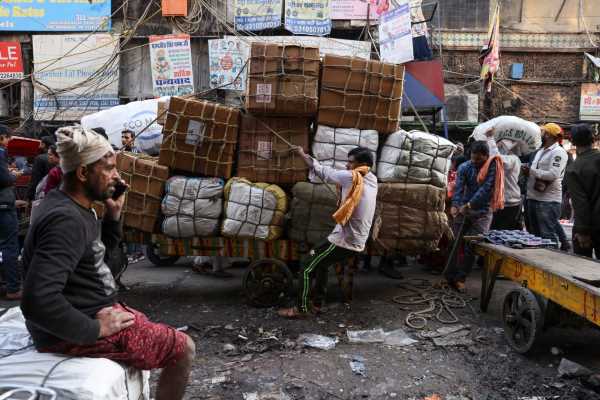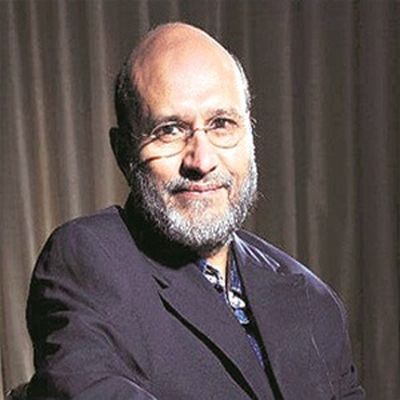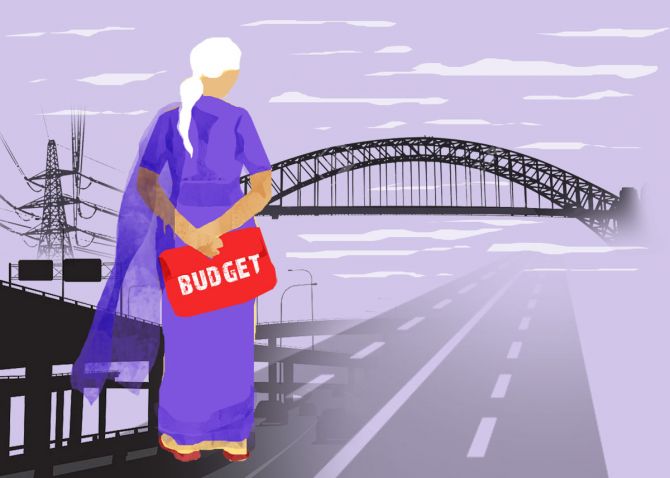‘Question mark if we will grow at 6%’
‘The rebound has run out of steam.’
The recently released data on India’s economic growth by the National Statistical Office did not come as a surprise to many observers of the Indian economy.
It said India’s economic growth decelerated to 4.4% in the October-December 2022 quarter while GDP growth for October-December 2021 was 11.2% and 6.3% for July-September 2022.
What awaits India in the coming days? Achche Din?
“The upper middle class and rich consumption may have rebounded, but most of the consumption is accounted for by the remaining 80% of the country’s population who are still suffering from joblessness,” explains Professor Santosh Mehrotra, visiting professor, Centre for Development, University of Bath, UK, and Research Fellow at the IZA Institute of Labour Economics, Germany.
“So, why would people want to splurge and consume when they are either jobless or their jobs are under threat?” Professor Mehrotra, a well-known human development economist, below, left, asks Rediff.com‘s Shobha Warrier.
The first of a multi-part interview:
As per the new growth figures released by the National Statistical Office, India’s economic growth came down to 4.4% in October-December 2022 quarter.
Was this on expected lines, or did it come as a surprise to you?
It is on expected lines. The decline is because of the rebound in the contraction of the economy, which it suffered in 2020-2021, has now run out of steam.
The economy had contracted very severely in 2020, so, you expected a large increase which was sustained in the following year.
As the foundational drivers of the economy are weak, the economy was slowing before 2020 itself.
The Indian economy contracted by 6.6% in 2021 when the global economy contracted only by 3.1%.
So, our management of covid as well as the nature of our stimulus was so poorly designed that our economy contracted more severely than the global economy in 2021.
Hence, it was expected to rebound. And it rebounded in the following two years.
But the overall GDP in three years — 2021, 2021-2022 and 2022-2023 — was just 2.5% on an average.
The bottom line is that the rebound has run out of steam.
Why do you think it ran out of steam?
Let’s look at what the drivers of the economy are.
Out of the four drivers, the first is private consumption expenditure which accounts for somewhere between 56%-60% of total GDP.
Consumption was not growing before Covid, as unemployment had increased; joblessness was growing post-demonetisation.
You will recall that the periodic labour force of the Government of India had said that unemployment was at a 45-year-old high in 2017-2018 which was the year after demonetisation.
The situation did not improve because from the beginning of 2017, the growth rate of the economy slowed every quarter for nine quarters prior to covid.
The end result was joblessness was high. So, it is but natural that consumption also would be low.
All the consumers got a massive hit due to dislocation, reverse migration, and then the very severe national lockdown when most countries in the world did not have a national lockdown.
All these resulted in very severe contraction of the economy. It rebounded from this, but joblessness remained very high.
Even today, the per capita consumption expenditure has just recovered to slightly above pre covid levels, and is very low. This is the major driver of growth.
Secondly, the investment rate to GDP which was 31% when this government came to power in 2013-2014 was falling prior to covid.
In covid times, it declined to 26% of GDP.
That barely climbed back in FY 22-23 to 29% now. From 26%, we have come to 29% now.
Unless the investment rate goes up, we will not sustain growth in FY 24.
The reason why investment is unlikely to increase is because capacity utilisation at the current consumption levels of industry is still running at 74% according to the RBI.
Industry people do not invest until capacity utilisation reaches about 80% which gives them the confidence.
But we are nowhere close to 80%. So, investment is not going to increase.
The third driver is exports which are not likely to improve. That is because of the international environment.
The international economy is now beginning to face a recession in Europe and North America.
They are not growing at the rate at which they had managed to grow pre-covid.
During covid, they had contracted. Because of the very heavy stimulus they had put in, they are suffering from massive inflation.
And because of massive inflation, demand compressed and our exports have come down.
In any case, we were doing very badly in exports after this government came to power in 2014.
Merchandise exports actually contracted from the level of $318 billion which the government inherited.
For five years, they contracted and they never reached the level of $318 billion.
They barely crossed that level in 2020 when covid came. Now, they have slowed again.
The fourth growth driver is public expenditure. Mainly private investment drives growth as public investment is a small component of growth.
The government has been increasing capital expenditure, trying to compensate for low levels of private investment.
Because the vast majority of investment comes from the private sector, this will not push the economy to a sustained growth.
So, it is expected that the growth rate will be around 5.5% next year and not even the 6.7% which the economy experienced in FY23.
The Economic Survey predicted a growth of 6%-6.8% of GDP growth in 2023-2024. Is it possible?
Not at all. There is absolutely no chance.
The Economic Survey is written by people who want to and need to make the government happy.
But we know that it is very unlikely to realise a growth of 6%-6.8%. They also know this because the international environment is not strong, and consumption expenditure is low.
The upper middle class and rich consumption may have rebounded, but most of the consumption is accounted for by the remaining 80% of the country’s population who are still suffering from joblessness.
In addition, the government’s policies have raised the inflation level.
So, why would people want to splurge and consume when they are either jobless or their jobs are under threat?
Who creates jobs? New investment.
- Part 2: ‘Economic rebound has run out of steam’
Feature Presentation: Aslam Hunani/Rediff.com
Source: Read Full Article



